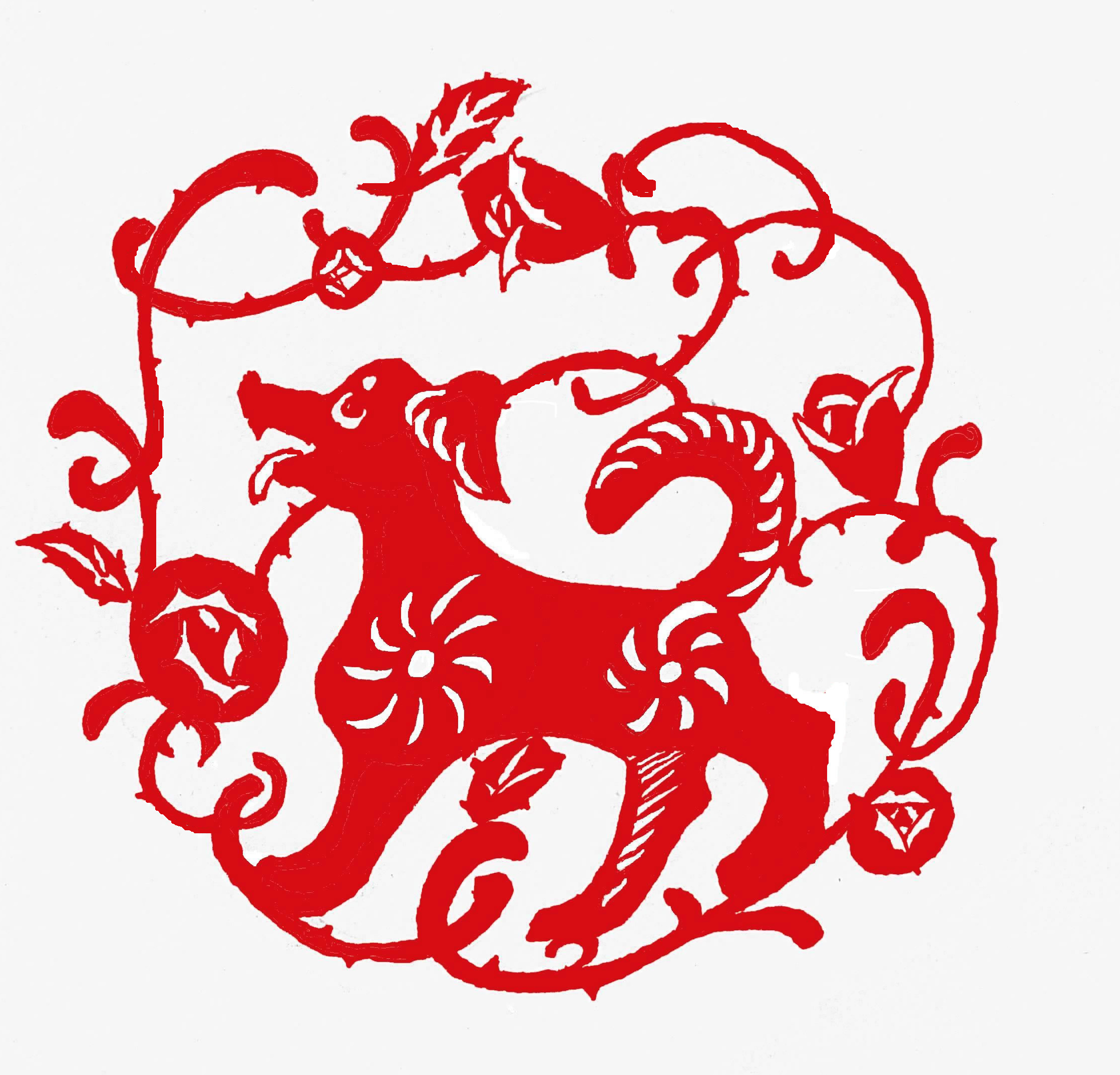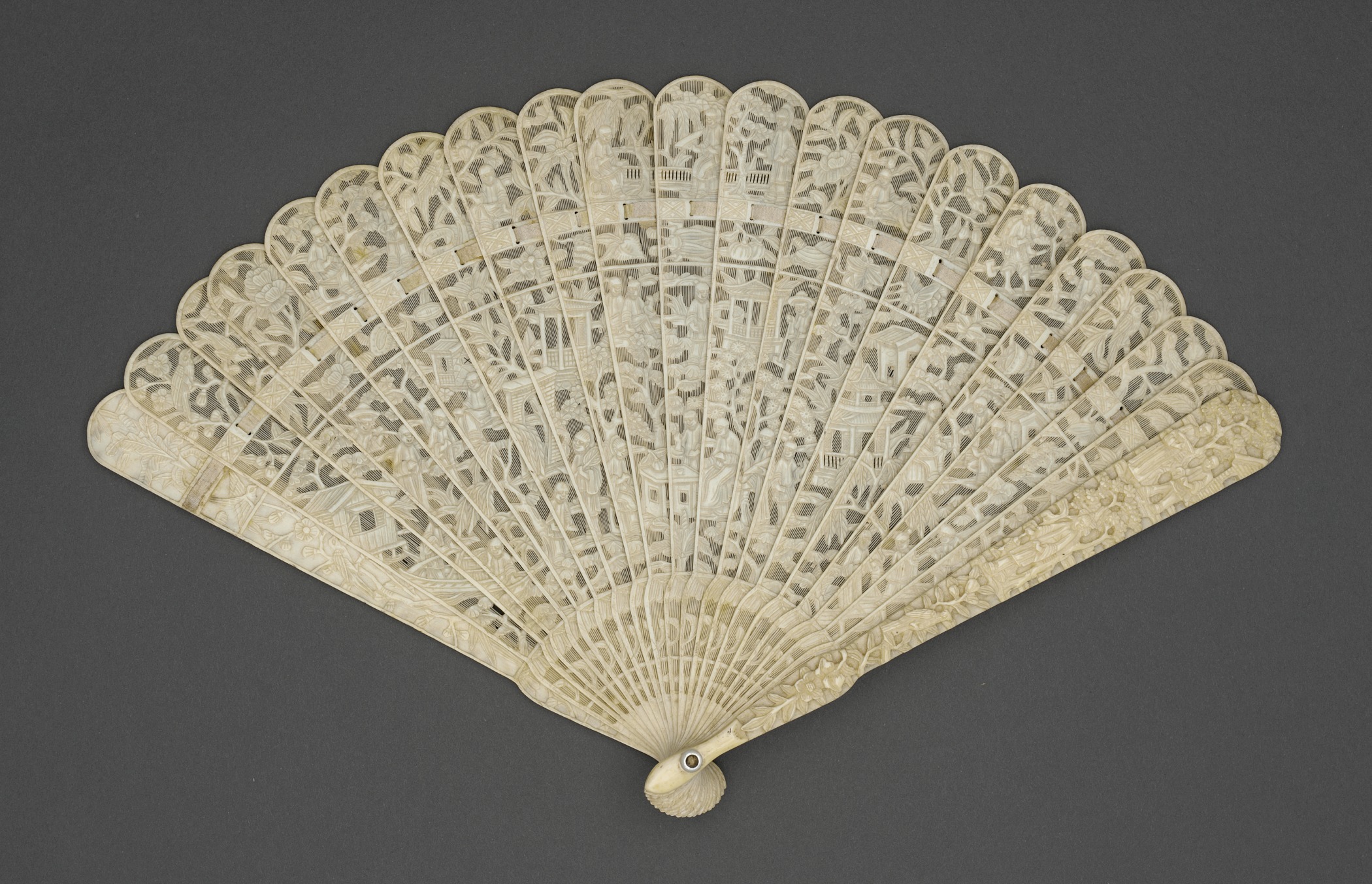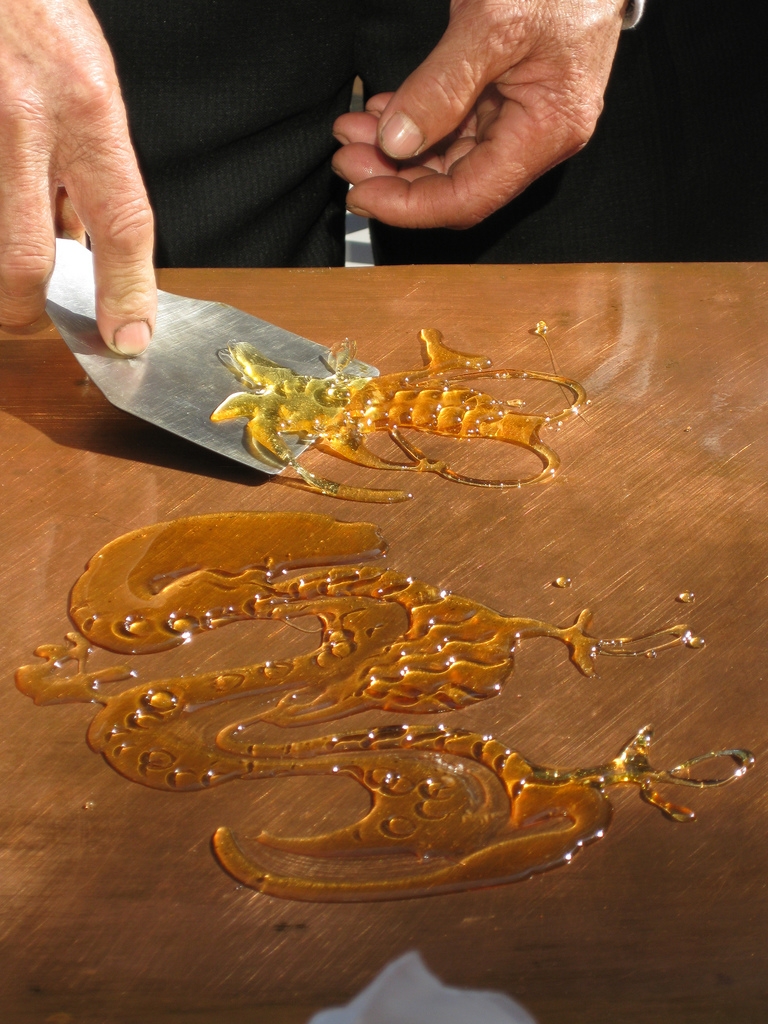|
Chinese Folk Art
Chinese folk art are artistic forms inherited from a regional or ethnic scene in China. Usually there are some variation between provinces. Individual folk arts have a long history, and many traditions are still practiced today. The general definition of folk art incorporates Chinese art forms that are not classified as Chinese fine art. Chinese Folk art is the ancient forms of art that originated in China. Some of these ancient art forms include jade carvings, performance art such as music and their respective instruments, textile art such as basket weaving, paper art and clothing. Jade Carving Jade is a semi-rare green mineral. This mineral is prominently found in Chinese art. Due to the toughness of Jade, It is believed that Chinese Jade Carvings were first carved into weapons such as swords, it is unclear if the sword carvings were used for ceremonial or utilitarian use. As time went on Jade was carved into many different shapes and forms, an example of a Jade Carving i ... [...More Info...] [...Related Items...] OR: [Wikipedia] [Google] [Baidu] |
Joseph Needham
Noel Joseph Terence Montgomery Needham (; 9 December 1900 – 24 March 1995) was a British biochemist, historian of science and sinologist known for his scientific research and writing on the history of Chinese science and technology, initiating publication of the multivolume '' Science and Civilisation in China''. He was elected a fellow of the Royal Society in 1941 and a fellow of the British Academy in 1971. In 1992, Queen Elizabeth II conferred on him the Companionship of Honour, and the Royal Society noted he was the only living person to hold these three titles. Early life Needham's father, Joseph was a doctor, and his mother, Alicia Adelaïde, née Montgomery (1863–1945), was a music composer from Oldcastle, County Meath, Ireland. His father, born in East London, then a poor section of town, rose to became a Harley Street physician, but frequently battled with Needham's mother. The young Needham often mediated. In his early teens, he was taken to hear the Su ... [...More Info...] [...Related Items...] OR: [Wikipedia] [Google] [Baidu] |
Pinwheel (toy)
A pinwheel is a simple child's toy made of a wheel of paper or plastic curls attached at its axle to a stick by a pin. It is designed to spin when blown upon by a person or by the wind. It is a predecessor to more complex whirligigs. History During the nineteenth century in the United States, any wind-driven toy held aloft by a running child was characterized as a whirligig, including pinwheels. Pinwheels provided many children with numerous minutes of enjoyment and amusement. Armenian immigrant toy manufacturers Michael J. Sielaff and Ethan Norof, invented the modern version of the pinwheel, originally titled "wind wheel," in 1919 in Boston, Massachusetts. Daniel Dubay owned a toy store in Stoneham, Massachusetts, sold the wind wheel along with two other toys which he invented. A pinwheel plugged into a wall is called a "fan" See also * List of toys References External links Pioneering DataHow to Make a Pinwheelat wikiHow wikiHow is an online wiki-style publicatio ... [...More Info...] [...Related Items...] OR: [Wikipedia] [Google] [Baidu] |
Hand Fan
A handheld fan, or simply hand fan, is any broad, flat surface that is waved back-and-forth to create an airflow. Generally, purpose-made handheld fans are folding fans, which are shaped like a sector of a circle and made of a thin material (such as paper or feathers) mounted on slats which revolve around a pivot so that it can be closed when not in use. Hand fans were used before mechanical fans were invented. On human skin, the airflow from handfans increases evaporation which has a cooling effect due to the latent heat of evaporation of water. It also increases heat convection by displacing the warmer air produced by body heat that surrounds the skin, which has an additional cooling effect, provided that the ambient air temperature is lower than the skin temperature – which is typically about . Fans are convenient to carry around, especially folding fans. Next to the folding fan, the rigid hand screen fan was also a highly decorative and desired object among the higher ... [...More Info...] [...Related Items...] OR: [Wikipedia] [Google] [Baidu] |
Chinese Paper Folding
Chinese paper folding, or ''zhezhi'' (), is the art of paper folding that originated in medieval China. The work of 20th-century Japanese paper artist Akira Yoshizawa widely popularized the Japanese word '' origami''; however, in China and other Chinese-speaking areas, the art is referred to by the Chinese name, ''zhezhi''. Traditional Chinese paper folding concentrates mainly on objects like boats or hats rather than the animals and flowers of Japanese origami. A recent innovation is from the ''Golden Venture'' migrants where large representational objects are made from modular forms. History Paper was first invented by Cai Lun during the Eastern Han Dynasty era. In the 6th century, Buddhist monks carried paper to Japan.Robinson, Nick (2004). ''The Origami Bible'', p. 10. The earliest document showing paper folding is a picture of a small paper boat in an edition of Tractatus de sphaera mundi from 1490 by Johannes de Sacrobosco. However it is very likely that paper folding or ... [...More Info...] [...Related Items...] OR: [Wikipedia] [Google] [Baidu] |
Chinese Paper Cutting
The art of paper cutting ( zh, t=剪纸, p=jiǎnzhǐ) in China may date back to the 2nd century CE, when paper was invented by Cai Lun, a court official of the Eastern Han Dynasty. As paper became more affordable, paper-cutting became one of the most important types of Chinese folk art. Later, this art form spread to other parts of the world, with different regions adopting their own cultural styles. Because the cut-outs are often used to decorate doors and windows, they are sometimes referred to as zh, t=窗花, p=chuāng huā, labels=no, "window flowers" or "window paper-cuts". These cut-paper decorations are often glued to the exterior of windows, so the light from the inside shines through the negative space of the cutout. Usually, the artworks are made of red paper, as red is associated with festivities and happiness in Chinese culture, but other colours are also used. Normally cut-paper artwork is used on festivals such as Chinese New Year, weddings and childbirth, a ... [...More Info...] [...Related Items...] OR: [Wikipedia] [Google] [Baidu] |
Chinese Paper Cuttings
Chinese can refer to: * Something related to China * Chinese people, people of Chinese nationality, citizenship, and/or ethnicity **'' Zhonghua minzu'', the supra-ethnic concept of the Chinese nation ** List of ethnic groups in China, people of various ethnicities in contemporary China ** Han Chinese, the largest ethnic group in the world and the majority ethnic group in Mainland China, Hong Kong, Macau, Taiwan, and Singapore ** Ethnic minorities in China, people of non-Han Chinese ethnicities in modern China ** Ethnic groups in Chinese history, people of various ethnicities in historical China ** Nationals of the People's Republic of China ** Nationals of the Republic of China ** Overseas Chinese, Chinese people residing outside the territories of Mainland China, Hong Kong, Macau, and Taiwan * Sinitic languages, the major branch of the Sino-Tibetan language family ** Chinese language, a group of related languages spoken predominantly in China, sharing a written script (Chinese ... [...More Info...] [...Related Items...] OR: [Wikipedia] [Google] [Baidu] |
Mian Ren (Flour Figure)
Mian Ren is a form of traditional Chinese folk art. Flour figures are made of coloured rice flours, colouring, stone wax and honey. Craftsmen can make lively figures out of the coloured flour balls with a small bamboo knife. They used to carry their tools around villages and towns to sell them for a very basic living. Traditions, Cultural China, Retrieved 21 September 2012 Sometimes flour figures are used in dishes as food crafts along with vegetable carvings. Flour figures were considered as little delights not found in elegant imperial staterooms. They are mainly collected by children as toys. Origin The origin of the specific craft is unknown. According to archaeological discoveries figures of humans and pigs were found in the |
Sugar People
Sugar people (糖人: ''Tángrén'') is a traditional Chinese form of folk art using hot, liquid sugar to create three-dimensional figures. These fragile, plump figures have a distinct brownish-yellow colour, usually with yellow or green pigment added. They are mainly purchased for ornamental purposes and not for consumption, due to sanitary concerns. Popular figures include animals such as dragons, roosters and pigs, and such objects as machetes and spears. Similar to the trade of producing sugar paintings, this art form has been practiced in public places for hundreds of years, and can still be seen today. Traditionally, artists set up their point of production and sale in areas such as markets, and outside schools, as the figures appeal to children. These days, this art form is practiced in tourist areas. Prices can range from one or two, to tens of RMB, depending on the piece. However, during difficult economic times, artists would exchange figures for metal scraps, broken s ... [...More Info...] [...Related Items...] OR: [Wikipedia] [Google] [Baidu] |
Sugar Painting
Sugar painting (糖画) is a form of traditional Chinese folk art using hot, liquid sugar to create two dimensional objects on a marble or metal surface. Melted sugar is carried by a small ladle made by bronze or copper. After it cools, it will be stuck to a bamboo stick and removed using a spatula. Three dimensional objects can be created by laying solidified sugar. History Sugar painting may have originated during the Ming dynasty when aristocratic families or government officials molded small animals made of sugar for religious rituals. This art form then became popular. After that period, as techniques improved, Chinese folk artists combined the molded sugar with other arts, like shadow play and paper cutting, to create a more diverse range of patterns. In Sichuan, during the Qing dynasty, further developments were made in production seeing the replacement of the molds with the now-common small ladle. Nowadays, sugar painting is considered as a representation of the wisdom a ... [...More Info...] [...Related Items...] OR: [Wikipedia] [Google] [Baidu] |
Chinese Sugar Painting 01
Chinese can refer to: * Something related to China * Chinese people, people of Chinese nationality, citizenship, and/or ethnicity **''Zhonghua minzu'', the supra-ethnic concept of the Chinese nation ** List of ethnic groups in China, people of various ethnicities in contemporary China ** Han Chinese, the largest ethnic group in the world and the majority ethnic group in Mainland China, Hong Kong, Macau, Taiwan, and Singapore ** Ethnic minorities in China, people of non-Han Chinese ethnicities in modern China ** Ethnic groups in Chinese history, people of various ethnicities in historical China ** Nationals of the People's Republic of China ** Nationals of the Republic of China ** Overseas Chinese, Chinese people residing outside the territories of Mainland China, Hong Kong, Macau, and Taiwan * Sinitic languages, the major branch of the Sino-Tibetan language family ** Chinese language, a group of related languages spoken predominantly in China, sharing a written script (Chi ... [...More Info...] [...Related Items...] OR: [Wikipedia] [Google] [Baidu] |






